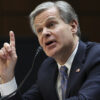A number of U.S. legislators want to give the Obama Administration the power to impose tariffs on imports from countries that manipulate their currencies. Such a policy could boomerang on U.S. exporters if other governments follow suit, since reductions in the value of the dollar in recent years could be used to justify new foreign tariffs on U.S. goods and services.
This is not just a hypothetical concern. Since 2003, the value of the dollar has declined by 25 percent versus China’s yuan. During the same time period, the value of the dollar has declined by 16.5 percent versus Japan’s yen.
Policymakers in China, Japan, and elsewhere need only Google the phrase “quantitative easing exchange rates” to find ample evidence of how U.S. monetary policy reduces the value of the dollar. As Christina Romer, former chair of President Obama’s Council of Economic Advisers, explained:
Like conventional monetary policy, quantitative easing also works through exchange rates. Reductions in American interest rates make domestic assets less attractive, reducing the demand for dollars and lowering the currency’s value in foreign exchange markets. This tends to decrease our imports and increase our exports.
The main goal of U.S. trade policy since World War II has been to make it harder for governments to impose trade barriers. Congress and the Obama Administration should be working to reduce trade barriers, not coming up with new schemes designed to boost tariffs and reduce international trade.
























